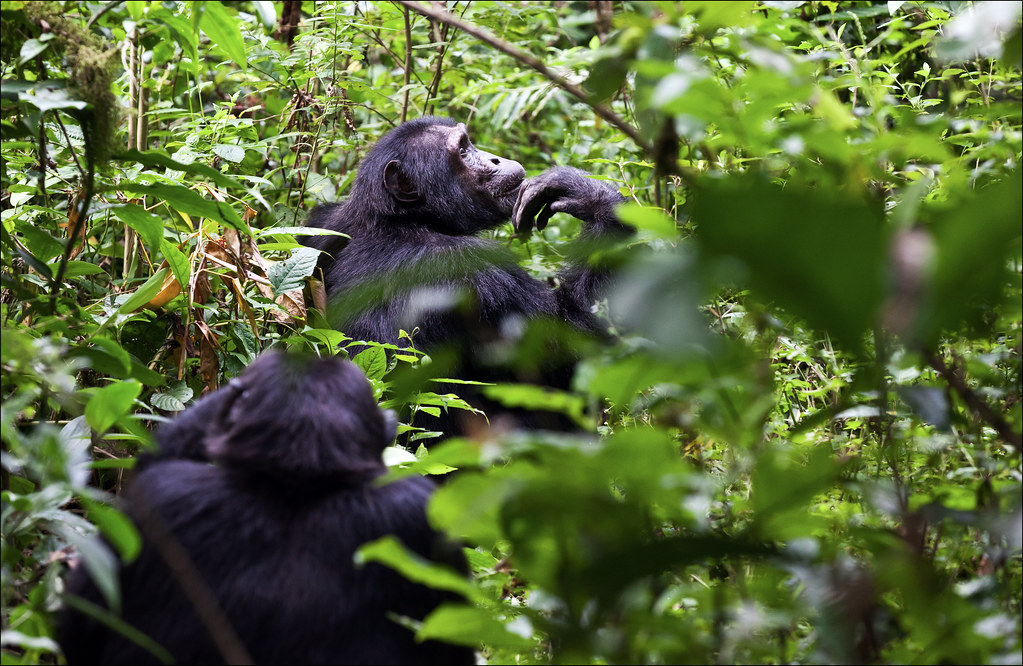
Distinctive Qualities Regarding Kibale National Park’s Distinct Features: Despite its modest size of roughly 760 square kilometers, Kibale National Park appears to be a distinct park. The elevation of Kibale National Park is approximately 1590 meters above sea level, with other regions being 1100 meters above sea level. This is the area south of Kibale National Park on the floor of the Albertine Rift Valley. The Toro-Semliki Wildlife Reserve, Katonga Wildlife Reserve, and Semliki National Park are all included in the Kibale Conservation Area. Fort Portal Town is only 20 km north of Kibale National Park, and the Ruwenzori Mountain Ranges are around 24 km to the east.
One of Kibale National Park’s distinctive features is its distinct biophysical environment, which is enhanced by a wide variety of landscapes, such as the stunning crater lakes, rolling hills, lush forest, swamps, and valleys. These features offer a confirmed opportunity for ecotourism in the region. A genuine and ideal alternative to the pricey mountain gorilla trekking in Bwindi National Park is Kibale National Park. You have the option to visit Kibale National Park for chimpanzee habituation at a discounted rate, which includes the chance to hike with roughly five habituated chimpanzee groups in the forest.
Kibale Forest National Park is remarkable because of its enormous primate population, particularly its chimpanzees, who have earned it the moniker “primate capital of the world.” The greatest place to trek and acclimate to chimpanzees is Kibale National Park. The vast population of habituated chimpanzees in Kibale National Park draws the majority of visitors. Since they share about 99% of the human DNA, chimpanzees are the closest mammals to humans.
The morning and evening shifts for chimpanzee trekking in Kibale National Park begin at 8:00 am and 2:00 pm, respectively. Because Kibale Forest is dominated by thick, tall tropical rain forest trees, chimpanzees can adapt to it. By bending the branches and lining them with twigs, chimpanzees construct their nests in trees because they enjoy spending time up there.
In the daytime, chimpanzees are considered terrestrial primates. Early in the morning, they descend from their nests to begin their daily task of searching for food. The chimpanzees consume succulent ripe fruits, leaves, and soft tree steams. The chimps’ hunting abilities are very amazing. Termites are extracted from holes using twigs. As a daytime snack, they often break nuts using stones. Chimpanzees occasionally consume tiny rodents, such as mongooses and rates, as well as small birds. Their ability to adapt to the outdoors is a result of their actual wild character.
The healthy exercise that enables you to have a general understanding of the activities of the chimpanzees in Kibale National Park is called chimpanzee habituation. In contrast to chimpanzee trekking, chimpanzee habituation begins around 6 a.m., when the animals are just descending from the trees, and lasts until the evening, when they return to their trees to spend the night.
Kanyanchu in Kibale National Park is the base of chimpanzee habituation. The habituation pledge is primarily carried out during the off-peak travel period. The months of March through June, which are the wet season, are ideal for chimpanzee habituation because the park is empty and only has a small number of visitors. The process of chimpanzee habituation takes place over the course of a day, and sometimes for several days.
The Bigodi wetland sanctuary, located 6 km from the visitor center at Kanyanchu in Kibale National Park, is another one of the park’s distinctive features. Take a nature walk via Bigodi Wetland in addition to the chimpanzee activities in Kibale National Park. More than eight primate species, including the African mangabey and l’hoest’s monkeys, can be found at Bigodi Wetland Sanctuary. Other animals that are infrequently seen there include the endangered swamp antelopes, statungas, bush pigs, civets, mongooses, bush bucks, and baboons.
Supporting the local communities in the vicinity of Kibale National Park is akin to visiting Bigodi Wetland Sanctuary. The profits from Bigodi Wetland are returned to the community. The Bigodi women’s project makes amazing crafts that you might require at home out of papyrus found in the swamp.
The Crater Lakes Tours to Kibale National Park also highlight the park’s distinctive features. You will have the most memorable safari experiences at the Ndali Kasenda Crater. There are several really old blast craters scattered throughout the region. The most fascinating is the Crater Trail at the top of the planet. You are exposed to Ruwenzori Mountain and three crater lakes. Under the guidance of a tour guide who is prepared to describe the various aspects and the cultures of the various villages, the top of the world crater climb lasts for three to five hours.
The distinctive feature of Kibale National Park is its capacity to house a sizable number of wild species on a relatively small area of land. Indeed, Kibale National Park is a wildlife reserve that offers nearly everything you could possibly need for an African safari.
